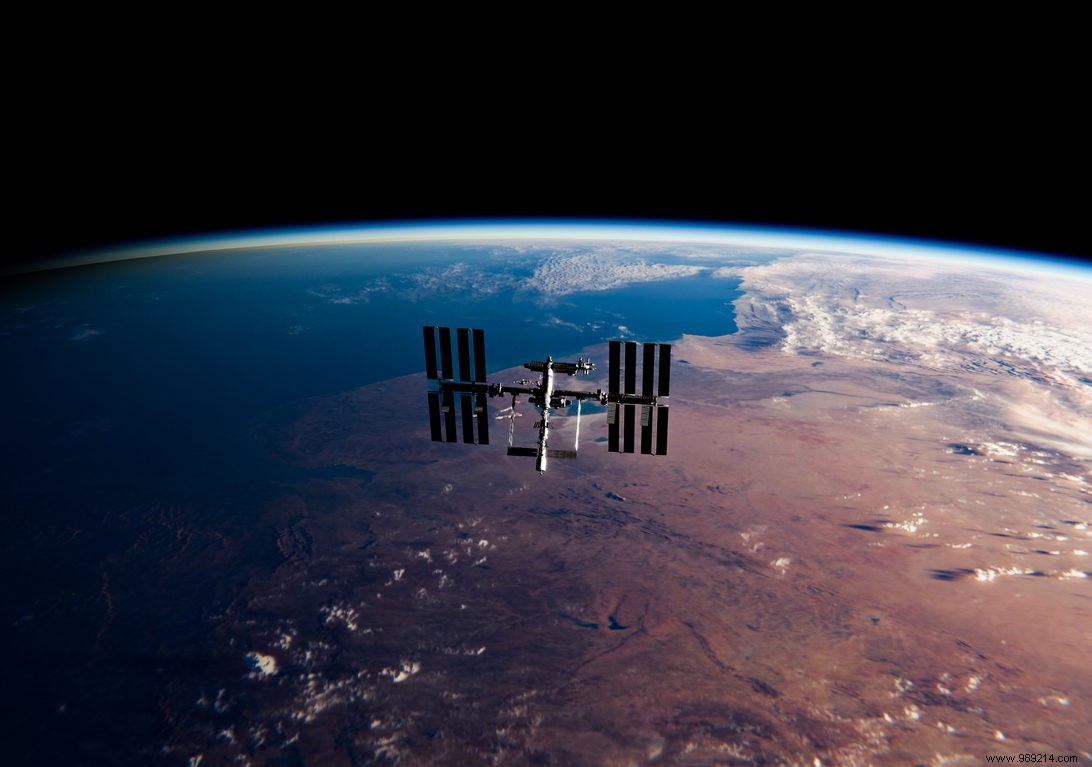Earlier this week, an anti-satellite test had forced seven SS astronauts to take refuge in their ship to protect themselves from the debris generated by the impact. These will increase the number of avoidance maneuvers carried out by satellite operators by more than 100% in the coming years.
Russia conducted an anti-satellite missile test on Monday, November 15, targeting a former Soviet surveillance structure named Kosmos 1408. The satellite, which then weighed two tons, was moving at 650 kilometers above the Earth. As a result, the explosion created a large cloud of approximately 1500 traceable pieces of debris , forcing the seven astronauts of the International Space Station (ISS) to take refuge in their ship as a precaution.
If by Monday afternoon the situation on board the station had returned to normal, some experts now warn that this space debris will remain a danger for years coming. They will indeed threaten the satellites in low orbit (LEO), as well as the future crews of the various space stations.
Hugh Lewis, head of the Astronautics Research Group at the University of Southampton, estimates that around half of these traceable fragments could burn up in the atmosphere within two coming years. The rest, on the other hand, could actually remain in space for more than a decade.
"Once these fragments are cataloged, I expect to see many close passes with satellites and other objects in low Earth orbit, potentially threatening security spatial “, he said.
Preliminary calculations also suggest that the debris cloud will increase the number of evasive maneuvers performed by operators by more than 100% in the next few years, Tim Flohrer, head of the space debris office at the European Space Agency (ESA), told Space.com.
In addition to these 1,500 traceable fragments, the impact also released hundreds of thousands of smaller invisible pieces for ground observers, according to the US Space Command (USSC), responsible for military operations in outer space. These microfragments could therefore promise us some unpleasant surprises in the future.
Remember that the International Space Station is not the only structure to evolve in the affected region. SpaceX's Starlink constellation, which currently includes nearly 1,850 satellites, is also affected.

The United States was quick to condemn the maneuver, stressing that it will affect the long-term security of all operations in low Earth orbit. “Russia has shown a willful disregard for the security, safety, stability and long-term sustainability of the space domain for all nations “, said in particular US Army General James Dickinson and the Commander of US Space Command, in a press release from the USSC.
The Russian Defense Ministry, which confirmed the test, maintains that its debris posed no risk to the ISS , ensuring that the "unconditional safety of the crew was for the country "a priority “.
Finally, let's remember that this is not the first test of this kind carried out. Two years ago, India also conducted an anti-satellite missile test, but aimed at a satellite much closer to Earth, 282 km latitude. As a result, most of the debris generated by this strike had disintegrated in the Earth's atmosphere within weeks.
The Russian test, on the other hand, is much more concerning due to the higher altitude of the targeted satellite. Debris from a similar test conducted by China in 2007, which targeted a satellite flying at 865 km, is still a major source of collision risk in low Earth orbit.